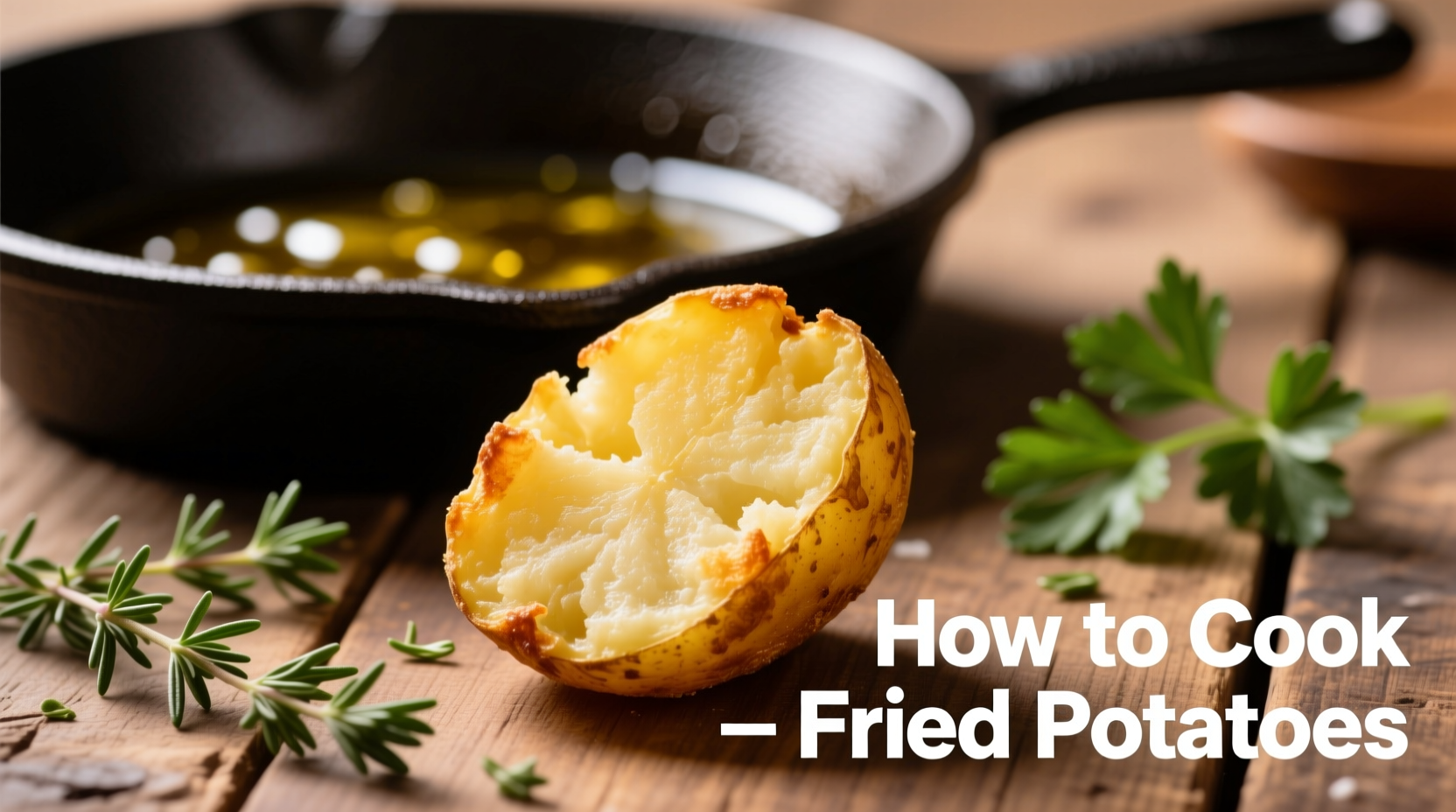The Secret to Crispy Fried Potatoes Starts Before Heating Oil
Most home cooks make critical mistakes before they even turn on the stove. The foundation of perfect fried potatoes begins with proper preparation. Selecting the right potato variety matters more than many realize - Russet potatoes contain the ideal starch-to-moisture ratio for maximum crispiness while maintaining a fluffy interior. Yukon Golds work well for thinner cuts but lack the structural integrity for chunkier preparations.
| Potato Variety | Best For | Starch Content | Soaking Time |
|---|---|---|---|
| Russet | Chunky fries, home fries | High (21-22%) | 30 minutes minimum |
| Yukon Gold | Thin fries, roasted potatoes | Medium (16-17%) | 20 minutes |
| Red Potatoes | Pan-fried home style | Low (14-15%) | Not recommended |
Based on USDA agricultural research, soaking cut potatoes in cold water for at least 30 minutes removes excess surface starch that causes uneven browning and soggy results. After soaking, thoroughly dry potatoes using a clean kitchen towel - moisture is the enemy of crispiness. Never skip this drying step as water causes dangerous oil splattering and prevents proper crisping.
Mastering the Double-Fry Technique: Why Temperature Control Matters
Professional kitchens universally employ the double-fry method for perfect results. The first fry at 325°F (163°C) partially cooks the interior without excessive browning. Remove potatoes when they're cooked through but still pale, then let them rest for 5-10 minutes. This resting period allows moisture to migrate from the interior to the surface.
The second fry at 375°F (190°C) creates that magical crispy exterior. According to food science research published in the Journal of Food Engineering, this higher temperature rapidly vaporizes surface moisture while triggering the Maillard reaction for optimal browning. Monitor oil temperature carefully using a reliable thermometer - fluctuations of even 10 degrees significantly impact results.

Avoiding Common Pitfalls: Practical Troubleshooting
Many home cooks face these fried potato challenges:
- Soggy potatoes: Caused by insufficient drying, overcrowding the pan, or oil temperature too low. Maintain proper oil volume (at least 2 inches deep) and fry in small batches.
- Burnt exteriors, raw interiors: Oil temperature too high during first fry. Use a thermometer and adjust heat as needed.
- Uneven cooking: Inconsistent potato sizes. Cut to uniform dimensions using a mandoline for precision.
When using alternative equipment like air fryers, adjust techniques accordingly. Air fryers require less oil but need frequent shaking for even crisping. Oven methods work best with preheated baking sheets and minimal oil for satisfactory results, though they won't match deep-fried texture.
Flavor Enhancements and Serving Tips
Season immediately after the second fry while potatoes are still hot - this allows seasoning to adhere properly. Classic salt works well, but consider these professional enhancements:
- Garlic powder and smoked paprika for depth
- Fresh herbs like rosemary or thyme added during the second fry
- Finishing with flaky sea salt for texture contrast
Serve within 5-10 minutes for peak crispiness. Fried potatoes lose their optimal texture quickly as moisture migrates back to the surface. Pair with grilled meats, burgers, or enjoy as a standalone snack with your favorite dipping sauce.
Frequently Asked Questions
What's the best oil for frying potatoes?
Peanut oil provides the highest smoke point (450°F) and neutral flavor preferred by professionals. Canola and sunflower oils work well as alternatives. Avoid olive oil for deep frying due to its lower smoke point and stronger flavor.
Can I reuse frying oil for potatoes?
Yes, but only for similar foods. Strain oil through cheesecloth after cooling to remove particles. Store in airtight container away from light. Discard after 2-3 uses or if oil becomes dark, foamy, or develops off odors. Never mix oil types.
Why do my fried potatoes stick together?
This happens when potatoes aren't properly dried before frying or when oil temperature is too low. Ensure potatoes are completely dry after soaking, and maintain consistent oil temperature at 325°F for the first fry. Don't overcrowd the fryer basket.
How can I make healthier fried potatoes?
For reduced oil absorption, try the double-fry method with precise temperature control. Soaking removes excess starch that causes oil absorption. Air fryer versions require only 1-2 tablespoons of oil but won't achieve the same texture as traditional frying.











 浙公网安备
33010002000092号
浙公网安备
33010002000092号 浙B2-20120091-4
浙B2-20120091-4